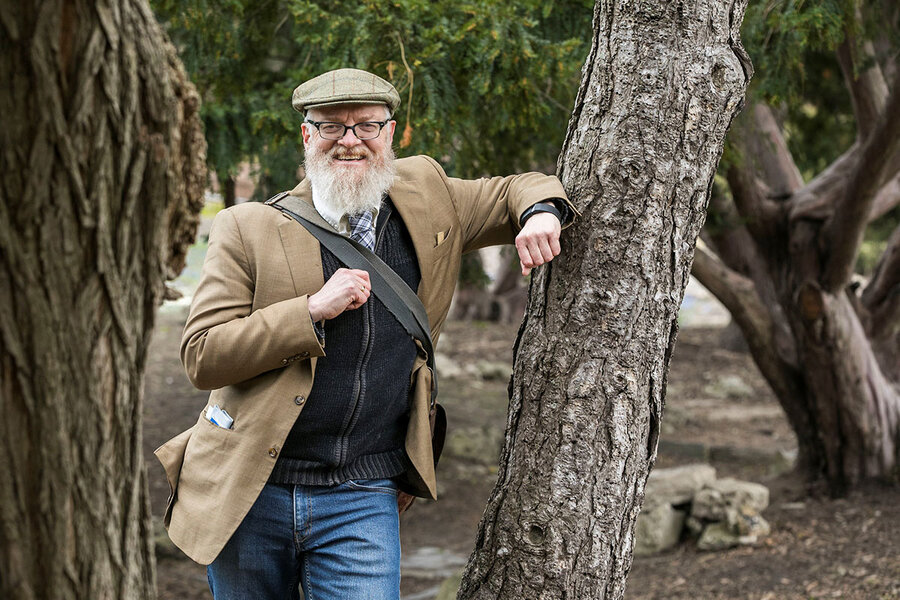Where the wild books are
What’s a common thread shared by “Peter Rabbit” and “Lord of the Rings,” “Harry Potter” and “Calvin and Hobbes,” “The Lorax” and “The Little Prince,” and “Where the Wild Things Are”? All these classics – along with vast swaths of children’s literature – have environmental themes.
So argues Liam Heneghan, co-director of the Institute for Nature and Culture at DePaul University in Chicago, in his new book “Beasts at Bedtime,” in which he reflects on the animals, forests, and pastoral scenes that populate many beloved children’s books. The genesis of his book came when he was cleaning out his children’s bookshelves. “It wasn’t until I systematically inspected these books that I really understood how much environmental content there was,” says Mr. Heneghan.
What started as a Saturday-morning project became a years-long investigation, one he hopes becomes a guide for sharing the joys of literature with children. Here, condensed for brevity, are some of his reflections.
Q: Why are environmental themes so prevalent in children’s books?
A lot of the writers of our classic children’s literature and more contemporary works of children’s fiction ... had a naturalist’s inclination toward wild things. Beatrix Potter was one of the big rediscoveries for me. She was an accomplished mycologist, had written about fungal reproduction, and had a paper presented to the Royal Linnean Society, but being a woman was not allowed to attend that august society nor encouraged in her interests, and she turned her zeal for natural history to her art and writing.
[J.R.R.] Tolkien had a lifelong concern about the fate of trees and the fate of forests. It got so bad he would rarely visit a natural area because he suspected it would have been destroyed. So what he’s doing on the page with the “Lord of the Rings” books is mapping out these concerns.
My intuition is that there is an environmental flavor to this literature because there was an environmental flavor to the writers of this literature.
Q: How does reading fit into the broader message that kids don’t get outside?
I don’t want to be understood as haughtily dismissing the advances of the last 15 or 20 years of environmental education, which is coaxing kids from the soft comforts of home to get outside. But we should be thinking about ways of transforming the indoors, particularly the reflective component of it.
It is worth our while pausing to think about the ways in which we can enhance the quality of children’s reflective lives.
Q: What books have resonated with you?
Some of my old favorites endured. The first book I remember owning was a copy of “The Hobbit.” All of the Tolkien stuff still resonates. Some things I reevaluated. “The Lorax” had been something that I found very important and still do, but now for very different reasons. I used to think the Lorax himself was the hero. Now I wonder whether Dr. Seuss was presenting us with the Once-ler as the hero. The Lorax epitomizes the figure of the hectoring, browbeating, generally failing approach to environmental policy, and the system ends up completely destroyed despite his fulminating against the Once-ler. The only expressions about the beauty of the system are when the Once-ler is thinking back to the first time he encountered the truffula forest, and he’s the one that ultimately hands over the seed of the truffula tree to the little kid with the idea that this is a system that could be restored. So it becomes to me a heartbreakingly optimistic story at the same time as being an anatomy of a system falling apart.
Q: Why do you think most adults feel so disconnected from nature?
I coined this term: toponesia. I think what happens is that as you turn toward adult concerns in your life ... there is a kind of forgetfulness about the importance of place to us.
Also, kids are being served up these extraordinary treasures with this abundance of environmental information, but unless there is somebody with them that can help illuminate some of these themes, maybe the full implications of them aren’t apparent to us as we read them.






